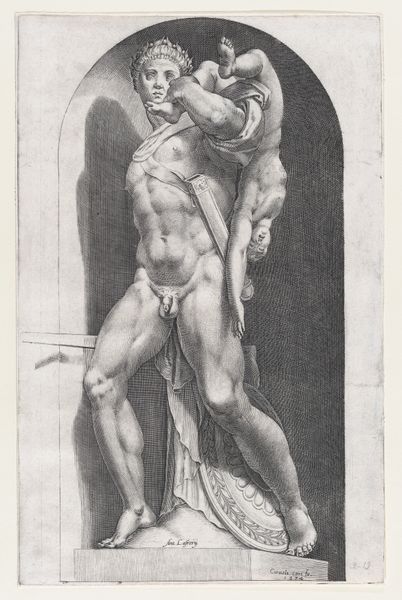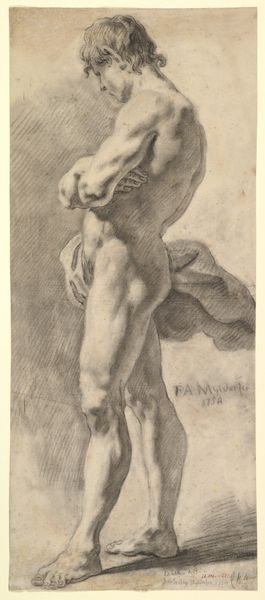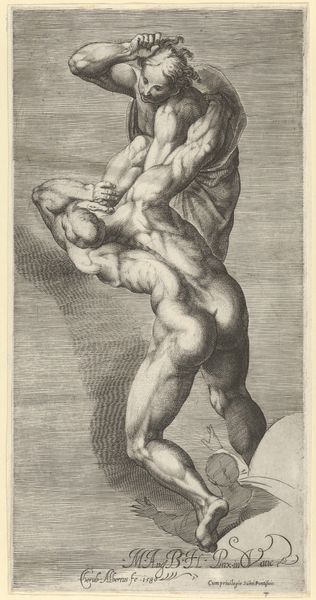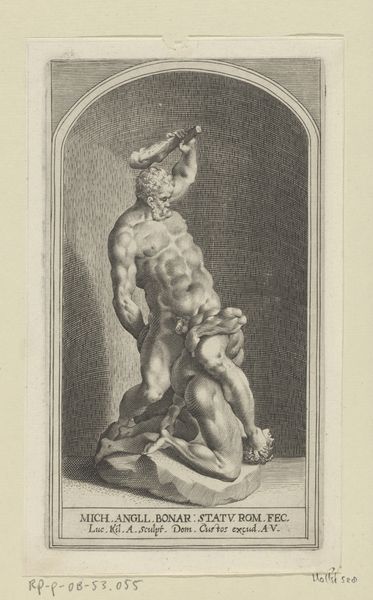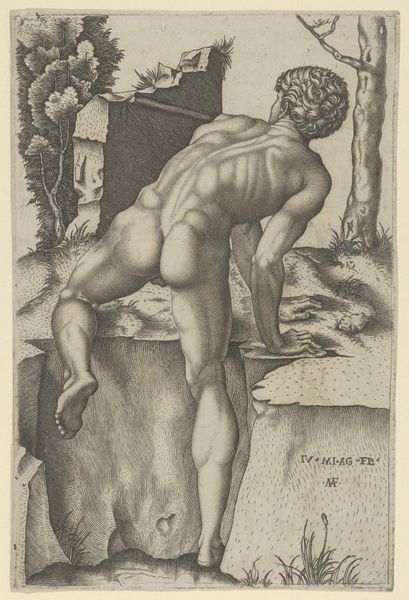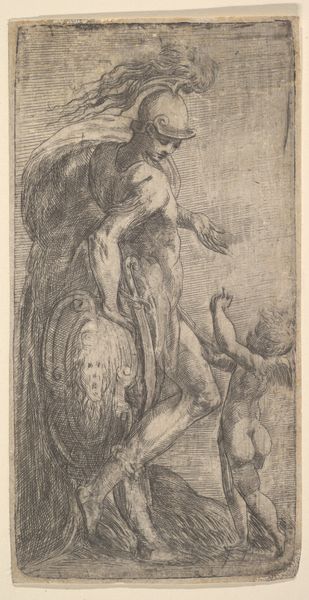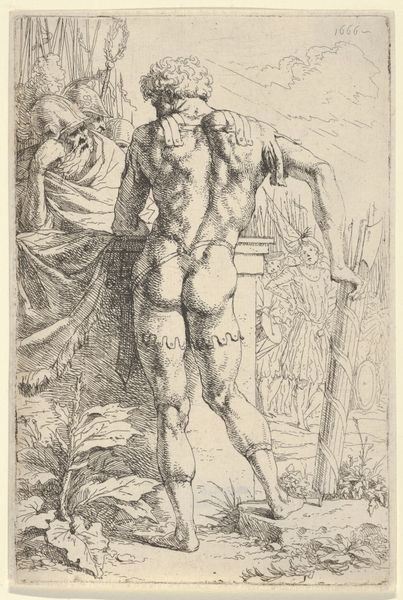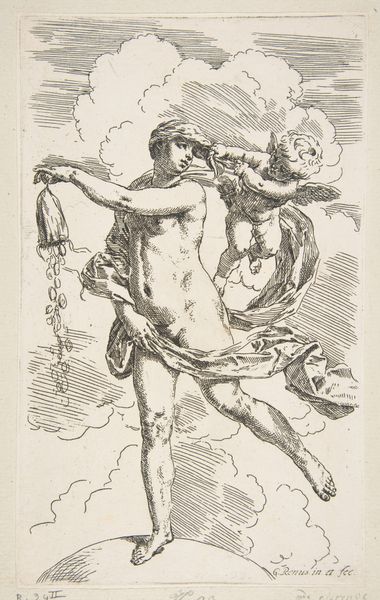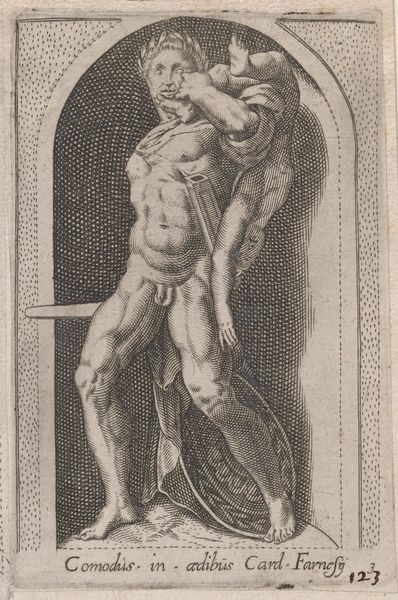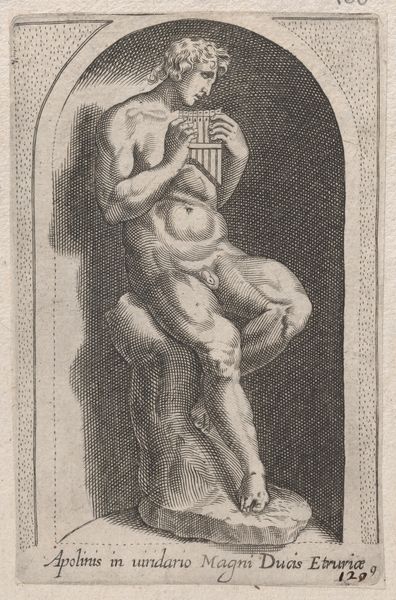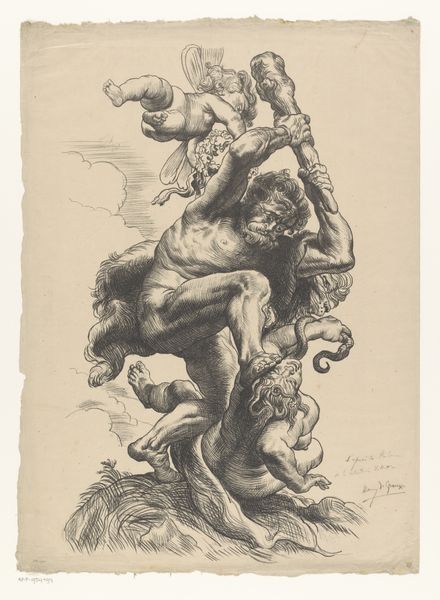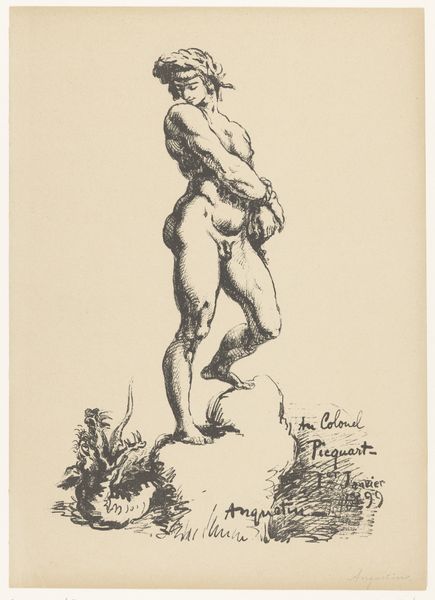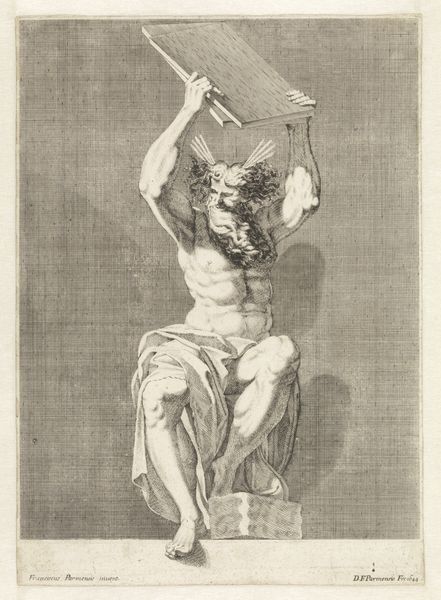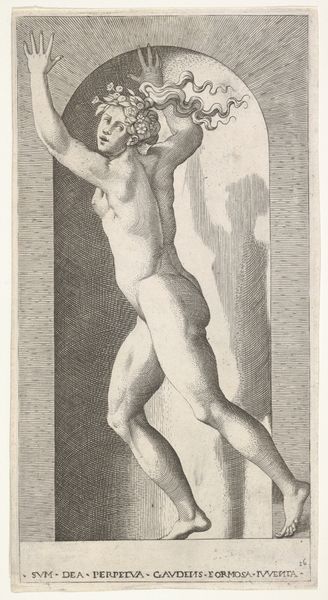
drawing, print, paper, engraving
#
drawing
# print
#
mannerism
#
figuration
#
paper
#
history-painting
#
italian-renaissance
#
nude
#
engraving
Dimensions: 164 × 98 mm (image/sheet, trimmed within platemark)
Copyright: Public Domain
Editor: We're looking at "A Crucified Man (Haman)," an engraving on paper made around 1550 by Melchior Lorichs, currently at the Art Institute of Chicago. The figure is so muscular; he seems to strain against the wood. How do you interpret this work, considering its form? Curator: Formally, the composition relies on dynamic tension. Note how the artist employs line—fine, closely packed hatching to model the exaggerated musculature, contrasted with open areas suggesting reflected light. The figure's pose, strained and unbalanced, contributes to a sense of drama. What about the setting strikes you? Editor: I didn’t notice the setting, actually! I was so focused on the body. Curator: The ambiguous setting – is it water? vegetation? – adds to the visual tension. Consider the linear quality of the engraving, how line becomes the defining element. This technique allows for intricate detailing of the figure’s anatomy. It is a study in Mannerist ideals of the male form, divorced perhaps from strict realism. Editor: So, you’re saying the visual language itself, the lines and composition, are more significant than any narrative? Curator: Precisely. The power resides in the artist's handling of form, the visual mechanics by which meaning is generated, or, arguably, deferred. The artist wants us to marvel at *how* it's rendered, perhaps more than *what* is rendered. Note the stylized musculature. Are those *realistic* veins? Or are they exaggerations pushing for symbolic or formalistic concerns? Editor: It's amazing how much information can be gleaned simply by looking at the formal elements. I really hadn't considered how much the artist's technique shapes our interpretation. Curator: Indeed, art is frequently less about overt messages and more about the language through which those messages—or the absence of them—are articulated.
Comments
No comments
Be the first to comment and join the conversation on the ultimate creative platform.
